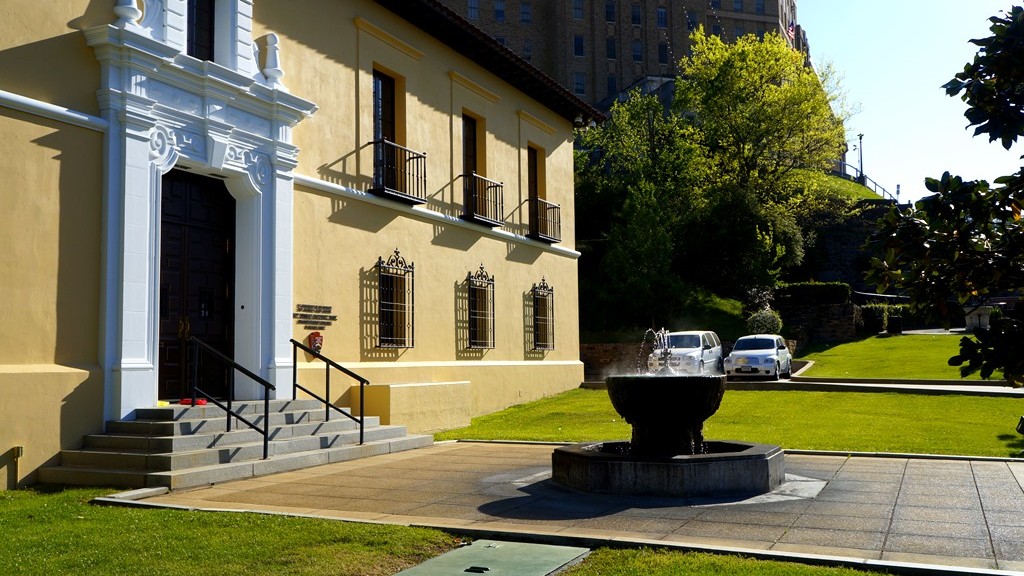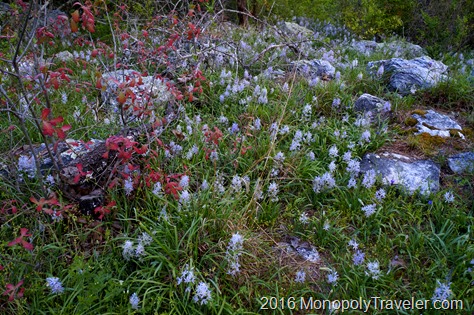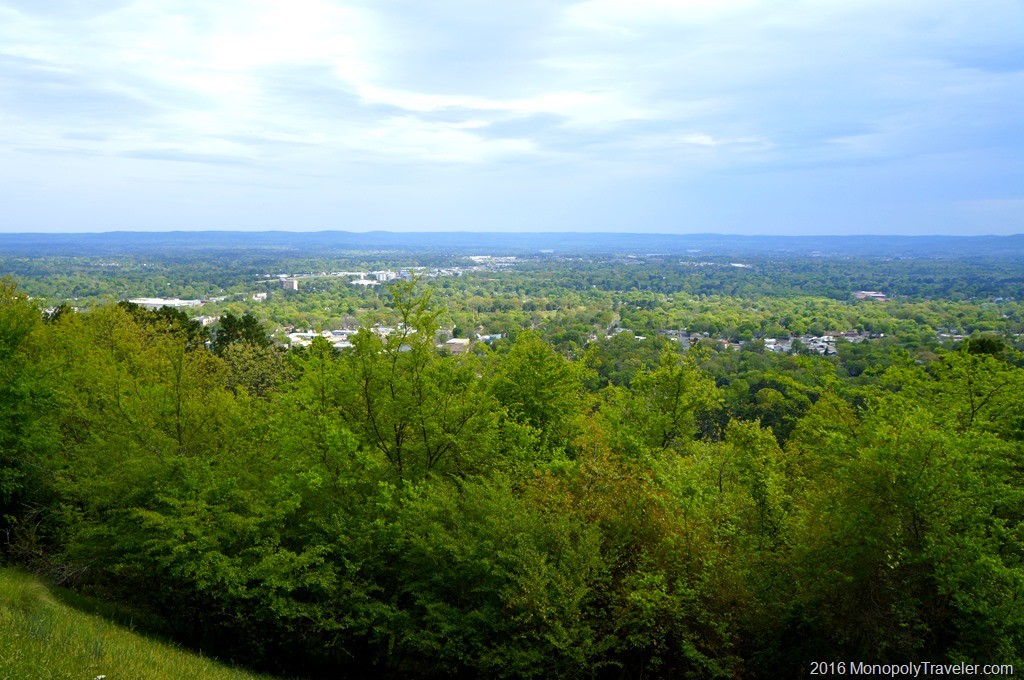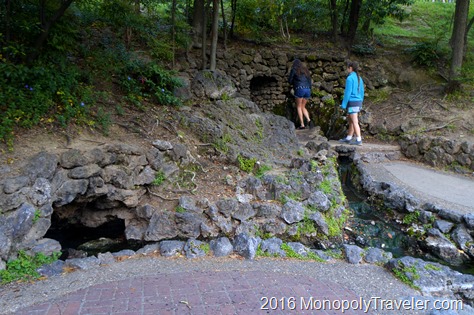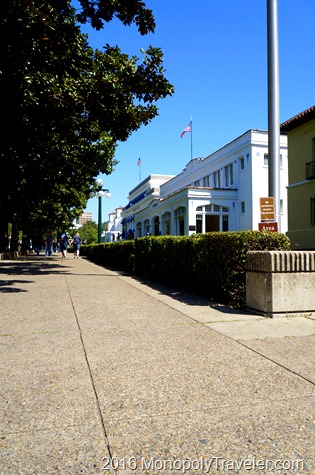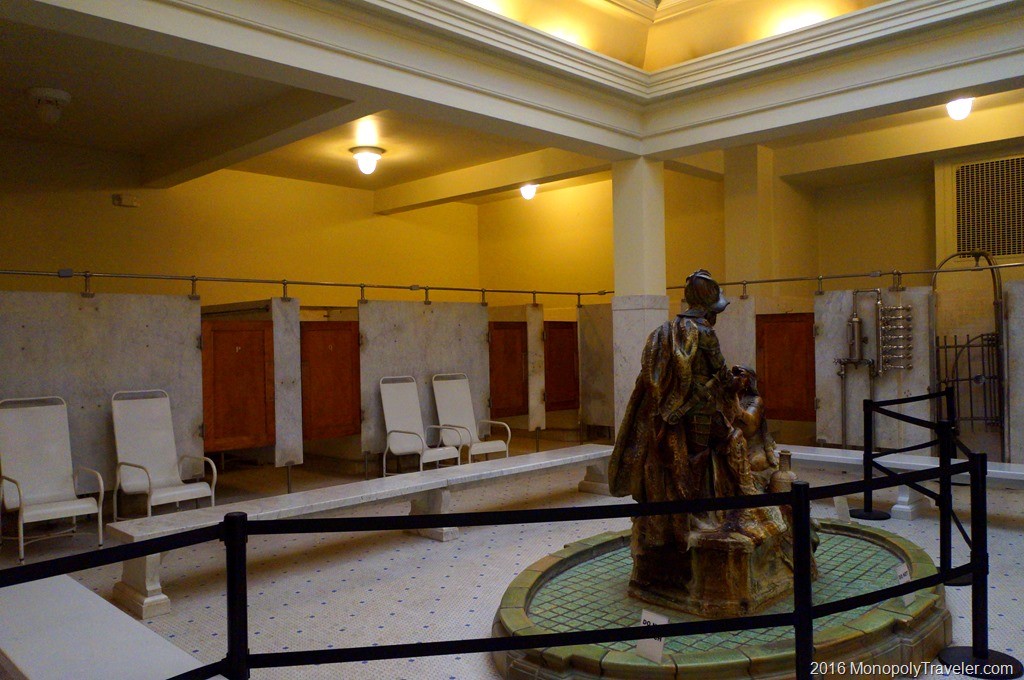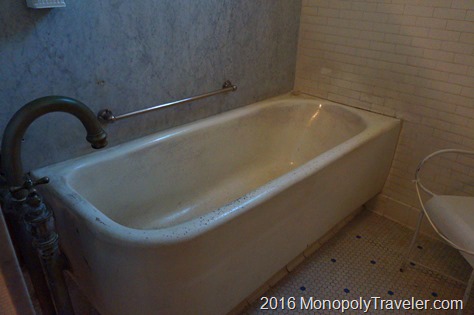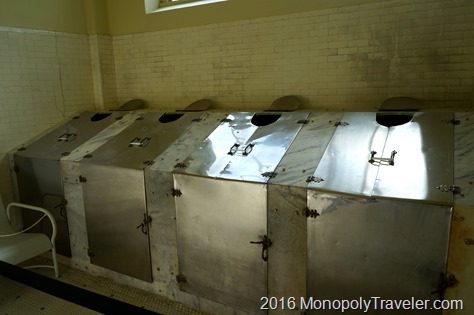Hot Springs National Park was a little surprising to me. I know that there are hot springs there and heard a little about bath house row but expected that much of the park consisted of natural areas with hiking trails through it. Usually there are entrances to the park with signs near the boundaries indicating your arrival.
In Hot Springs you drive into town and come upon bath house row which includes the visitor’s center and park sign. As we drove towards this park following our GPS navigation system it announced we had arrived. I looked up and there was bath house row immediately in front of us. Where were the hiking trails? As we continued to explore this National Park we found a scenic drive with overlooks, that we’ve become accustom to, since these bath houses were closed for the day.
During our exploration we discovered a couple of hot springs running out of the ground. It was surprising how hot the water is trickling from these springs as they steam in the cooling evening air. Even though we knew the water was warm we were unprepared for how warm – hot the water is. It averages 143 degrees Fahrenheit which is warmer than I thought it would be. A nice, unexpected treat as we wondered through the National Park on our first evening in the area.
The next morning we returned to bath house row just before they began opening for the day and wandered around looking at all these magnificent buildings built to provide hot, soothing baths before hot baths were commonplace. To be honest, when I first heard of bath house row I imagined more of a brothel type situation but learned that these bath houses where for relaxation and healing which was confirmed by the acknowledgement of the US Park Service maintaining this area. They probably wouldn’t do that if they were in fact brothels. My perception of the bath houses of Hot Springs was changed.
Once these buildings began opening we entered the Fordyce Bath House which is now the park visitor’s center and used to explain how bath houses operated and the services they provided. We began by learning about bath house row and some of the history of the bath houses lined up next to each other. Then we moved on to a changing and waiting area for use of the showers and bathtubs.
While walking around exploring the Fordyce Bath House we were able to see some of the showers and tubs people would pay to use for the hot water flowing from their faucets to soothe their aching muscles and sore joints. These were the first “hot tubs” and provided the basis for using hot water to relax and recover in.
It is interesting to see how many pipes and shut off handles were used in these bath house showers. Probably the basis for today’s more extravagant showers. It’s difficult for me to imagine what baths and showers would have been like without hot water heaters. Not very pleasant I would guess especially in the winter months.
Other people would opt for a steam bath so they would climb into these steam boxes where they would sit and have steam from these hot springs pumped into the boxes helping to heal sore muscles and joints. Any piece of these hot springs were considered beneficial and having healing properties. Today these types of therapy are in most house holds all thanks to water heaters.
Once their time in hot showers, warm baths, or steam chambers was complete they would take time to just sit and relax enjoying their reprieve from aches and pains. There were spaces created for doing just that with comfortable seating, soothing music playing, pool tables, fireplaces, or places in the warming sun to sit. For many people, these life recharging waters would be an all day event. Athletes began to visit these houses to help their recovery speed up because of the healing benefits of Hot Springs.

